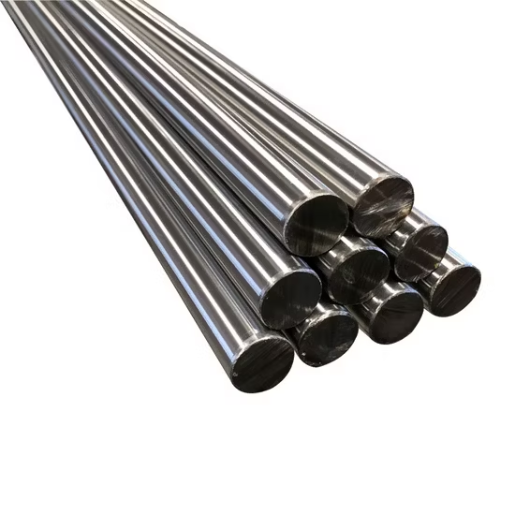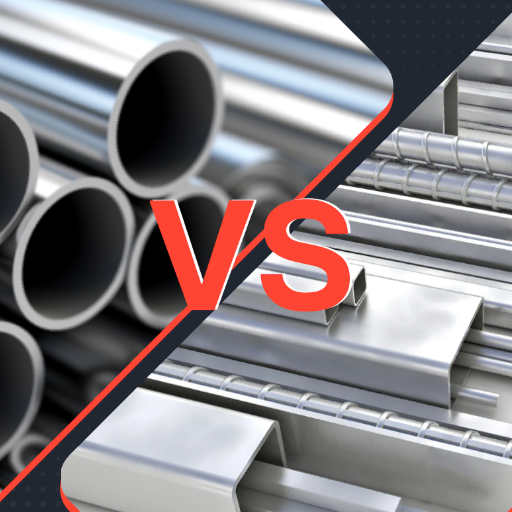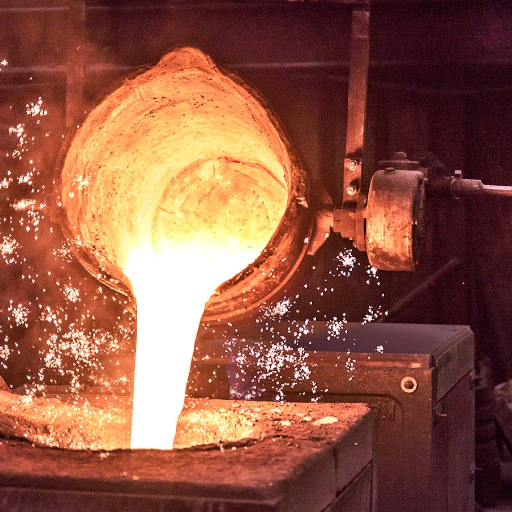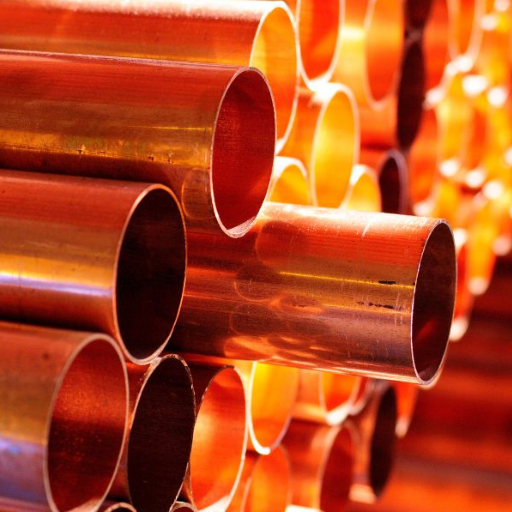Irrespective of the environment demanding high corrosion resistance that you want to select for, these very fine distinctions between the stainless steel 316 and 316L could be what comes in the way of attaining an unfortunate service life for your application. They are both widely accepted as equally strong and resistant to some of the stiffest conditions, but their chemical compositions and properties discriminate against the castes for their applications. This article will be your complete reference guide to understand the main differentiations between 316 and 316L stainless steel in terms of chemical composition, mechanical properties, and perfectly suitable applications. Whether designing for marine environments, chemical processing, or pharmaceutical manufacture, this in-depth comparison will resolve all doubts and will help as a guide towards a better choice for your project.
Introduction to 316 and 316L Stainless Steel
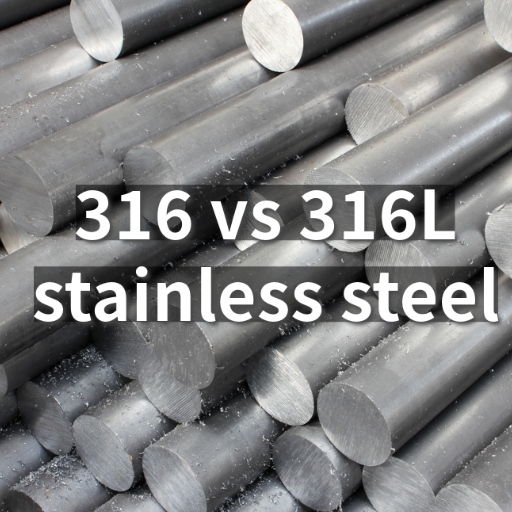
316 and 316L stainless steels are considered to be the best for corrosion-resistance purposes, combined with strength and versatility, thus making them all the more suited to heavy-duty applications. Their carbon content is the real distinguishing factor. Being a low-carbon variety with a maximum carbon content of 0.03%, as compared to the 0.08% of 316, enhances its weldability and lessens carbide precipitation during welding, making 316L more preferred where a lot of welding and exposure to more highly corrosive environments are required.
Both grades find use in marine and chemical environments; however, 316 stainless steel is best for applications that require superior strength because the slightly higher carbon content increases hardness, while 316L, through its reduced carbon content, offers superior resistance to localized forms of corrosion such as pitting and crevice corrosion under severe conditions.
What is 316 Stainless Steel?
316 stainless steel is a molybdenum-bearing austenitic stainless steel known for its exceptional corrosion resistance, particularly in chloride environments. It is primarily composed of iron, with significant amounts of chromium (16-18%), nickel (10-14%), and molybdenum (2-3%), along with smaller quantities of manganese, silicon, carbon, and trace elements. The addition of molybdenum enhances its resistance to pitting and crevice corrosion, making it an ideal material for marine, chemical processing, and pharmaceutical industries.
This grade exhibits very good mechanical properties of tensile strength from 515 to 720 MPa, with high creep resistance at elevated temperatures. It may maintain and retain durability and structural integrity starting from cryogenic temperature up to 870°C (1600°F), thus also being accepted for use in heat exchangers, pressure vessels, and many other high-temperature applications. Plus, it is non-magnetic and easy to fabricate (welding, machining), hence versatile in engineering.
What is 316L Stainless Steel?
316L stainless steel is, in effect, a low-carbon version of the common 316 grade prepared with greater corrosion resistance in certain specified severe environments and better flexibility. Chemically, it is principally composed of iron with chromium (16-18%), nickel (10-14%), and molybdenum (2-3%), having superior resistance to pitting and crevice corrosion in a chloride-type environment, like marine or industrial chemicals. The low carbon level in 316L prevents carbide precipitation during processes such as welding, thus retaining corrosion resistance of the weld zones.
Speaking of mechanical properties, stainless steel 316L comes endowed with a tensile strength that is close to 485 MPa and a yield strength of around 170 MPa, and these strengths make it adequate for construction purposes. It retains mechanical properties at temperatures below zero all the way up to about 870°C (1600°F). 316L, being biocompatible and resistant to sterilization, finds greater application in medical implants and surgical equipment, as well as food processing. It has great formability and welding characteristics, and as such, it is also very durable and workable for a wide range of industrial applications in aerospace or pharmaceutical manufacturing.
Chemical Composition: 316 vs 316L
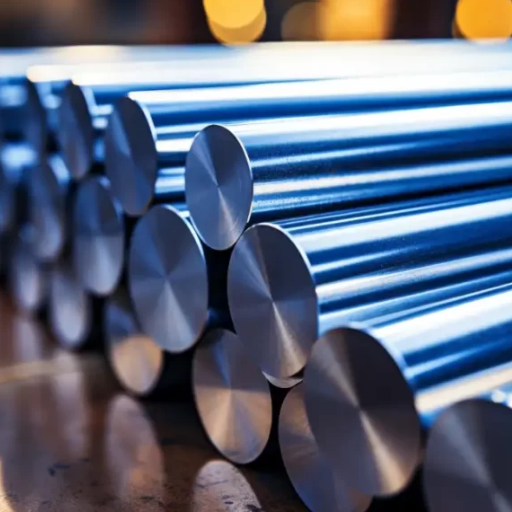
The primary difference between 316 and 316L stainless steel lies in their carbon content. 316 contains up to 0.08% carbon, while 316L is limited to a maximum of 0.03%. Such low carbon in 316L inhibits carbide precipitation during welding, thus improving the resistance to intergranular corrosion. Both grades are majorly the same: chromium (16-18%), nickel (10-14%), and molybdenum (2-3%), which determine their strength and corrosion resistance, with the carbon content being the lone matter of concentration in suitability for heavy welding or corrosive environment applications for 316L.
Carbon Content in 316 and 316L
Carbon content in stainless steel holds a fundamental place in defining stainless properties during welding and resisting corrosion in a specific environment. Grade 316 having a higher carbon content than the 316L one might result in carbide precipitations at grain boundaries when exposed to high temperature, usually experienced during the welding process. This carbide precipitate phenomenon is called sensitization, which reduces corrosion resistance, especially in environments prone to intergranular attacks like chloride-rich or very acidic environments.
With its lower carbon content (<0.03%), grade 316L minimizes this risk and is therefore considered the preferred type for extensive welding. However, the presence of other carbon-reducing factors usually dictates the choice of 316L in these industries: marine engineering, chemical processing, and pharmaceutical manufacturing-hence its reputation for providing a dependable solution to corrosive environments after welding. Also, this carbon reduction guarantees that this material meets stringent regulatory standards, especially in environmental compliance that is subject to FDA or other global standards of hygiene and integrity.
Elemental Differences
One of the key distinctions between similar stainless steel grades lies in their elemental composition, which directly impacts their mechanical properties and corrosion resistance. For instance, while both 316 and 316L contain approximately 16-18% chromium, 10-14% nickel, and 2-3% molybdenum, 316L has a lower maximum carbon content, typically capped at 0.03%, compared to 316’s limit of 0.08%. This reduction in carbon content in 316L significantly lowers the risk of carbide precipitation during welding, which can otherwise compromise corrosion resistance at welded joints or heat-affected zones.
In addition, there are trace amounts of elements that can enhance specific properties. Higher levels of molybdenum confer resistance against pitting and crevice corrosion, especially in chloride-rich environments, thereby making both grades appropriate for saline applications. However, the varying levels of manganese and silicon bring about differentiated ductility and workability in the said grades. What is more, nitrogen boosts strength and corrosion resistance even further across stress points, albeit in tiny concentrations. These variations help render both 316 and 316L compatible for more than a few sectors, with precise choice dictated by the end-use environmental demand and fabrication process.
Mechanical Properties Comparison
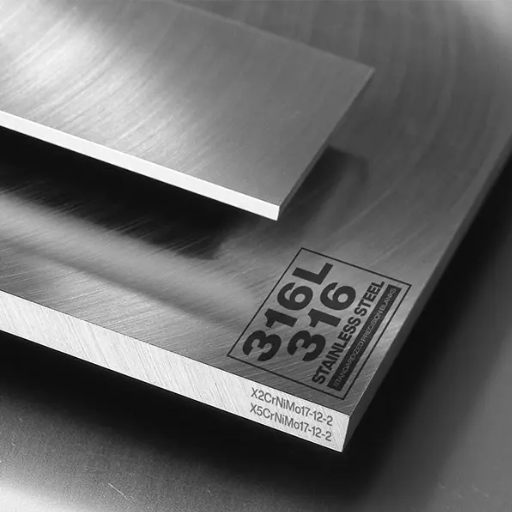
- Tensile Strength and Yield Strength
Scrutiny evinces that tensile strength is the principal mechanical property separating 316 from 316L, and to a lesser extent yield strength. Due to the higher carbon concentration, Grade 316 is basically characterized by a somewhat greater tensile strength relative to 316L, except that in certain instances, its weldability is impaired. 316L, conversely, gives priority to resisting stress during welding and does not readily form carbides because of its low carbon content.
- Hardness and Toughness
Although they are mutually consistent in terms of hardness on the Brinell scale and are able to resist degradation due to wear, they discriminate among one another under attention. They offer good toughness at cryogenic temperatures, with which in certain low-temperature applications, they would be required to be resilient.
- Flexibility in Application
Yield Strength and Tensile Strength
The yield strength and tensile strength of stainless steel grades 316 and 316L are significant factors in determining their suitability for various applications. Yield strength refers to the stress at which a material begins to deform plastically, while tensile strength measures the maximum stress a material can endure before breaking.
For stainless steel 316, the approximate yield strength is 30,000 psi (205 MPa), and the tensile strength is around 75,000 psi (515 MPa). Due to its reduced carbon content, 316L typically has a slightly lower yield strength of about 25,000 psi (170 MPa) and a tensile strength of 70,000 psi (485 MPa). These properties, coupled with excellent corrosion resistance, make both alloys particularly valuable in construction, marine environments, and chemical processing industries.
Impact Toughness of 316 vs 316L
The impact toughness comprises one of stainless steel grades 316 and 316L, rendering the variation in impact toughness due to differences in carbon content that affect their microstructure and mechanical response during impact conditions. Due to their low carbon content, 316L manages higher impact toughness, particularly under sub-zero temperatures, as any carbide precipitation along grain boundaries during welding or heat treatment is minimized. 316L luster marks it as an excellent candidate for cryogenic applications where materials undergo all forms of extreme cold.
As an example, the Charpy impact tests results, which are trumpetized over 316L steel, show that the energy absorbed is usually greater than that of standard 316, with 316L steel often exceeding 100 J at room temperature, depending somewhat on testing methods, whereas 316 could show results that are slightly less than these. High toughness is a very valuable attribute in an environment where resistance to impact shock and sudden fracture is critical, such as that of pressure vessels and structural components under low-temperature service. It is very important that one understands these differences when material selection is at hand to guarantee structural safety and reliability.
Applications of 316 and 316L Stainless Steel
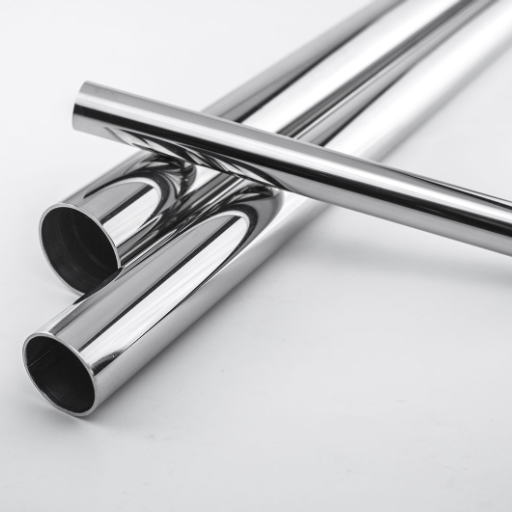
Due to great corrosion resistance, such as durability and versatility, 316 and 316L find applications in a range of industries. Some applications are:
- Marine Environments: Both grades undergo street tests for marine-type equipment applications, including boat fittings and coastal installations. They resist saltwater and chloride-induced corrosion.
- Chemical and Petrochemical Industries: Mainly tanks, pipelines, and heat exchangers become the place for storing aggressive chemicals dumped upon with corrosive attacks.
- Food and Beverage Industry: Non-reactive surfaces that provide civil construction of food preparation and process tanks, and all those features where hygiene is of critical importance.
- Medical Equipment: 316L is a favorite for surgical instruments, implants, and orthopedic devices because of its biocompatibility associated with its low carbon content.
- Construction and Architecture: Cladding and facades based on structural components that are exposed to heavy weather conditions provide vast opportunities for eminent beauty and performance.
These uses emphasize the necessity of the right choice of grade according to given conditions to merit optimal performance and lifecycle.
Industries Utilizing Grade 316
- Marine Industry: For the marine environment, grade 316 is a material of choice for improved resistance to chloride-induced corrosion. These are boat fittings, deck hardware, and propeller shafts, as well as underwater structures. Studies point out that its molybdenum content improves pitting resistance in a saltwater environment.
- Food and Beverage Processing: The grade finds extensive application in the food and beverage sector as resistant against acid and alkali solutions. It includes storage tanks, processing equipment, and piping systems, where hygiene and non-reactivity are primary considerations. The smooth surface meets sanitary standards and helps preserve the pure state of consumable products.
- Chemical and Petrochemical Industry: Grade 316 is also used for chemical storage tanks, heat exchangers, and process equipment. Its resistance to chemical attacks by acid, alkaline, and saline substances guarantees the longevity of handling aggressive fluids. A study shows an improved average service life of 20% during such operations compared with regular grades.
- Pharmaceutical Industry: High corrosion resistance and the ability to tolerate sterilization processes such as steam cleaning make Grade 316 ideal for pharmaceutical applications. These include cleanroom equipment, reactors, and autoclaves. The material meets rigorous industry standards, which guarantee the integrity of sensitive products.
- Medical Industry: Grade 316 provides instruments, surgical implants, and medical devices with biocompatibility and a non-reactive surface. Use reduces the opportunity for negative biological reactions, especially in long-term implant devices.
Industries Utilizing Grade 316L
- Pharmaceutical Industry: Due to the low carbon content of Grade 316L and their extraordinary resistance on pitting and crevice corrosion, this material is suitable for highly sensitive environments requiring a clean environment. The material finds wide application in sterile equipment, storage tanks, and piping meeting rigorous industry standards like GMP (Good Manufacturing Practices).
- Medical and Healthcare Sector: Considered the 316L grade because of its biocompatibility and hypoallergenic properties being suitable for surgical implants, orthopedic devices, and dental applications. The low carbon content further decreases the buildup of carbide precipitation in medical applications.
- Chemical Processing: It is very well adapted for chemical reactors, heat exchangers, and transport pipelines encountering chlorides and other aggressive chemicals. The studies so far on 316L Grade show that it resists chloride concentrations of up to 2000 ppm for certain periods of time under controlled conditions, thus extending the life of the equipment involved in chemical processing.
- Food and Beverage Industry: The excellent corrosion resistance rating of 316L alloys and its ability to keep the area clean make it good for processing equipment, storage tanks, and utensils. This prevents contamination while complying with sanitation standards such as the FDA and NSF.
- Marine Applications: The fine resistance of Grade 316L in saltwater corrosion has made it a trusted material for shipbuilding, underwater pipeline, and offshore platform. It is widely used in propeller shafts, bolts, and marine fittings, providing sustain in saline-rich conditions.
Choosing Between 316 and 316L for Specific Applications
When determining whether to use 316 or 316L stainless steel for a specific application, it is critical to evaluate factors such as operating temperature, required corrosion resistance, and mechanical properties. The primary difference between 316 and 316L is the carbon content; 316L contains lower carbon, reducing its susceptibility to carbide precipitation during welding. This makes 316L preferable for welded components as it minimizes the risk of corrosion at weld joints, especially in high-chloride or acidic environments.
When one seeks high-temperature service in a project, it may be better to pick stainless steel 316 for this purpose rather than 316L. And 316L is better applied at cryogenic temperatures because of its high ductility at low temperatures. The 316L grade is thus precious in chemical processing and marine atmospheres, where aggressive chemicals and chlorides are potential threats, mainly due to the higher pitting resistance of the 316L stainless steel. Both types fulfill the stringent specifications that make them very corrosion resistant and thus perform satisfactorily; however, the selection of one or the other depends on the environmental circumstances in which it will be used and, where fabrication is concerned, as well as the life expectancy of the job.
Conclusion: Making an Informed Decision
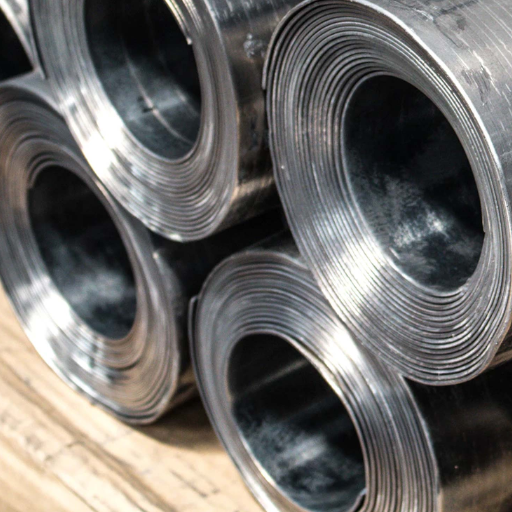
Summary of Key Differences
|
Parameter |
304L Stainless Steel |
316L Stainless Steel |
|---|---|---|
|
Composition |
Contains 18% chromium, 8% nickel |
Contains 16% chromium, 10% nickel, 2% molybdenum |
|
Corrosion Resistance |
Lower resistance to pitting and crevice |
Higher resistance in harsh environments |
|
Strength |
Comparable tensile and yield strengths |
Similar with slightly higher durability |
|
Weldability |
Excellent |
Excellent |
|
Cost |
More affordable |
More expensive |
|
Applications |
General-purpose, kitchen equipment |
Marine, chemical, and medical uses |
|
Temperature Resistance |
Performs well in standard temperatures |
Better resistance to extreme conditions |
|
Durability in Saline Environments |
Moderate |
Superior for prolonged exposure |
|
Availability |
Commonly available |
Widely available |
Final Thoughts on Choosing 316 vs 316L
Amongst 316 and 316L stainless steels, the choice of steel should uniquely solve the problem by considering the application needs. The two alloys differ little in their base properties, including corrosion resistance; they also include high strength and, probably, in their time, durability. The lowering of carbon content in 316L, however, makes it more suited to applications where there’s extensive welding or an environmental suspicion of intergranular corrosion.
Reference Sources
-
Additively Manufactured 316L Stainless Steel for Orthopedic Applications: This review highlights the advantages of 316L stainless steel in orthopedic applications due to its corrosion resistance, biocompatibility, and mechanical properties.
-
Creep Deformation and Fracture Behavior of 316 and 316L(N) Stainless Steels: 316L(N) stainless steel, alloyed with nitrogen, exhibits superior creep resistance compared to 316 stainless steel. Weld metals showed lower rupture lives than base metals.
-
Corrosion and Organic Inhibitors for 316L Stainless Steel: Organic inhibitors demonstrated high efficiency (up to 98.86%) in protecting 316L stainless steel from corrosion. The study emphasizes the role of functional groups in adsorption mechanisms for sustainable industrial applications.
Frequently Asked Questions (FAQs)
Q: What’s the difference between 316 and 316l stainless steel?
A: The primary difference between 316 and 316l stainless steel lies in their carbon content. 316 stainless steel contains a maximum carbon content of 0.08%, while 316l has a lower carbon content of 0.03%. This lower carbon content in 316l results in enhanced resistance to corrosion, making it particularly suitable for welding applications. When comparing 316 vs 316l stainless steel, it’s important to consider how the carbon levels affect the material’s performance in various environments. In applications where corrosion resistance is critical, 316l is often recommended over 316 due to its superior corrosion resistance and lower susceptibility to sensitization.
Q: What types of stainless steel are used in various applications?
A: There are several types of stainless steel, with 304 and 316 being the most common grades. 304 stainless steel is often used for kitchen equipment because it offers good corrosion resistance and is cost-effective. However, when it comes to harsher environments, 316 stainless steel is preferred due to its higher strength and better resistance to corrosion, particularly against chlorides. Additionally, 316l stainless steel is often utilized in marine applications due to its lower carbon content, which enhances its corrosion resistance.
Q: What are the key differences between 316 and 316l steel?
A: The key differences between 316 and 316l steel primarily revolve around their carbon content and resulting properties. As mentioned earlier, 316 stainless steel has a higher carbon content, which can lead to reduced corrosion resistance in certain environments. On the other hand, 316l’s lower carbon content provides superior corrosion resistance, especially in welded structures where heat-affected zones might be susceptible to corrosion. Additionally, the mechanical properties of both types of steel are similar, but 316l is often preferred for applications requiring welding and exposure to harsh chemicals.
Q: Is 316 or 316l stainless steel better for resistance to corrosion?
A: When it comes to resistance to corrosion, 316l stainless steel is generally considered better than 316. This is primarily due to 316l’s lower carbon content, which makes it less likely to suffer from corrosion in welded areas. The superior corrosion resistance of 316l makes it ideal for applications in marine environments, chemical processing, and other harsh conditions. While 316 stainless steel offers good resistance to corrosion, particularly against chlorides, it does not perform as well as 316l.
Q: Which is the right stainless steel for my project: 316 or 316l?
A: The right stainless steel for your project depends on its specific requirements. Suppose your application involves exposure to aggressive environments, such as marine settings or chemical processing. In that case, 316l stainless steel is likely the better choice due to its lower carbon content and enhanced resistance to corrosion. Conversely, if the project demands higher strength and is not exposed to corrosive elements, 316 stainless steel may suffice. It’s also essential to consider welding and fabrication processes, as 316l’s lower carbon content makes it more suitable for welded applications.

